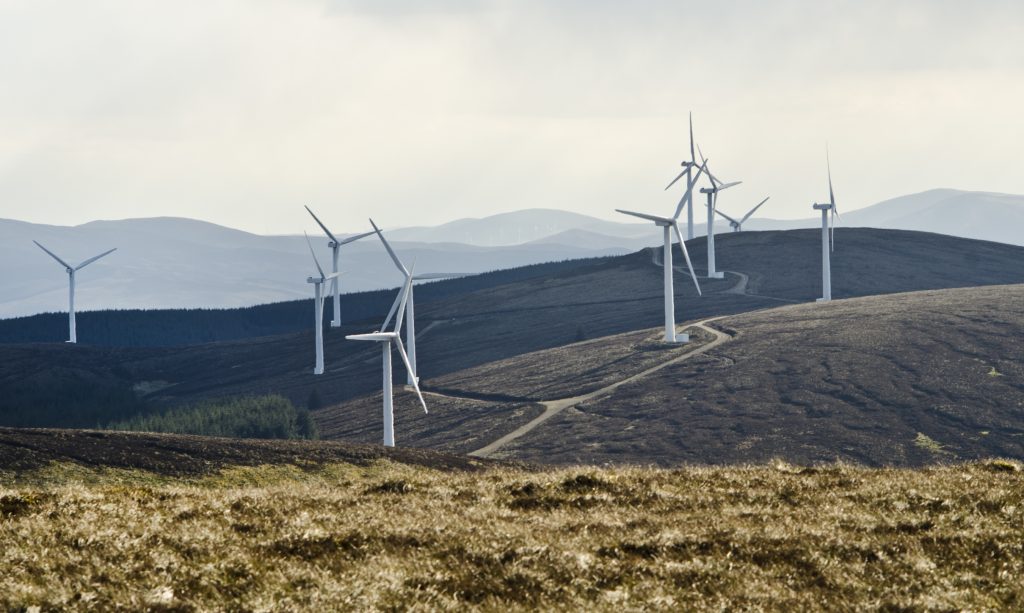by Dr Iain Staffell – Imperial College London
Some call it intermittency, some call it variability; the simple fact is we cannot control the wind.
Britain’s wind farm output swings widely from one week to the next, caused by high- and low-pressure weather systems passing over the country.
Wind output can vary from 2 GW one day to 12 GW the next1, and Britain can experience long lulls in wind output. For example, the mini heatwave at the end of February saw a 6-day long collapse in wind output. So, how can Britain balance out the variability that wind power brings?
From the chart below it is clear that gas is the main source of flexibility at the moment. We have sufficient capacity, and it is sufficiently flexible to ramp up or down by 10+ GW when needed. Nuclear output is stable over the course of the year, only varying due to maintenance. Coal provides extra balancing during the coldest weather (when gas prices are higher), but at most it flexed up and down by 5 GW (daily average) during January. Hydro and biomass also provide flexibility, but together they are dwarfed by the swings in wind power. Finally, interconnectors ought to provide flexibility, but at the moment it is more profitable to import at full power regardless of what the wind is doing.
Daily average output from wind farms (top) and other generating technologies (below) over the first three months of 2019
Britain has around 20 GW of wind capacity today, but National Grid and BEIS expect this could double to 40 GW in as little as seven years2. Doubling the current levels of volatility at a time when coal capacity is retiring will test the whole electricity system, and likely require new sources of flexibility. Three key options are available to us: (1) more interconnection, (2) energy storage, (3) new fuels such as hydrogen, or (4) using existing fuels to back up wind farms.
Further interconnection could help, but weather systems cover large areas, meaning wind speeds tend to be correlated. Research has shown that countries across Northern Europe tend to experience high or low wind output at the same time.
Balancing the wind with energy storage would need radically different technologies to those we have today. Britain’s pumped hydro storage plants usually operate on a daily cycle, charging up overnight and discharging during the day (although they are increasingly used to provide rapid response to grid fluctuations). Lithium ion batteries are for even shorter durations, typically holding less than 4 hours of charge, rather than the several days needed to balance out wind lulls. Electric vehicles, homes and offices could provide a large new source of flexibility in the near future, through vehicle-to-grid(V2G) and demand-side response (DSR).
Hydrogen has the potential to offer large-scale energy storage, as it could use the UK’s geological formations to provide weeks, or even months, of backup. Hydrogen could be produced from excess renewable power at times of surplus, or from natural gas with carbon capture. Hydrogen sorely needs technological scale-up and cost reductions to become a competitive option, but hydrogen could prove pivotal in the UK meeting its economy-wide carbon reduction targets by offering zero-emission heating for homes and powering long distance and heavy goods vehicles.
Sticking to the present day, fossil fuels provide an almost-ideal counterbalance. They have a high energy density, are easy to store, and we already have the infrastructure in place to transport and use them. However, in a carbon-constrained world, we cannot continue indefinitely using unabated coal or gas to backup renewables. Biomass is an alternative, but we only have 3.2 GW today, and this is not expected to grow significantly over the coming decades. Ultimately, a mix of all these solutions will likely be the best route forwards.
1: For example on January 7th and 8th or January 24th and 25th.
2: National Grid Future Energy Scenarios and BEIS Energy and Emissions Projections.
Authors: Dr Iain Staffell, Professor Richard Green, Dr Rob Gross and Professor Tim Green.
